In the Annex Gallery’s second room is a double exhibit of images entitled “All Falls Down.
This show consists of photographs by Lebanese photographer Gregory Buchakjian and Cincinnati artist Bill Howe documenting the impact of the abandoned, neglected homes and buildings in their respective cities of Beirut and Cincinnati. Curated by Saad Ghosn, these losses hav occurred for a variety of reasons: economic speculation, poverty, lack of government support, corruption, war etc.
The wall text of this exhibit describes the mission and selection of images: “In 2009, Gregory Buchakjian decided to symbolically inhabit abandoned houses (in Beirut). This gesture consisted of recovering buildings whose inhabitants had been expelled either by wars or by real estate speculation…”
“Beirut has become ruins. With time, ruins become beautiful. But I will not get accustomed to it. Beirut was ugly, maybe. But she was my city. She was bad, maybe.
But she was my city.” Poetess Nadia Tueni, while surveying the ruins of the city, moving toward the shore.
Gregory Buchakjian is a Lebanese photographer, filmmaker and art historian. He emerged on the art scene after the 2006 Lebanon War with a collective of Lebanese filmmakers, creating projects on cultural aspects of Lebanon. His photojournalism on abandoned dwellings constitutes a long-term research and exploration of the dramatic transformations during the war and postwar periods.
Cycles of bombing of the city of Beirut from 1979 through 1988 have all been devastating, but the bombing of the Port of Beirut in the heart of the city may be the most tragic.This powerful explosion not only destroyed the port and its silos but also annihilated the surrounding city with debris blasted through the air. Dwellings and community infrastructure were destroyed as well as cultural sites and museums housing antiquities and precious art.
Between 2009 to 2018, forty people took part in Buchakjian’s stated mission despite the risk involved, unwanted encounters, accidents, bugs, debris. Selected sites were staged with human models.Young women and children, photographed in the ruins in full or fragmented views can be seen as memory markers of what is gone or as symbolic of the human access to the aftermath of what remains.
The resulting series of images are hauntingly poetic.

Doorless openings framed by ravaged walls and broken plastering are formatted as a geometric abstract through which a fleeting female figure briefly appears. Her passage, accented by the brilliant light at the end of a darkened hallway, is the focal point of the image.
The pending gloom is only momentarily relieved by the remnants of pink, orange and blue wall paint.
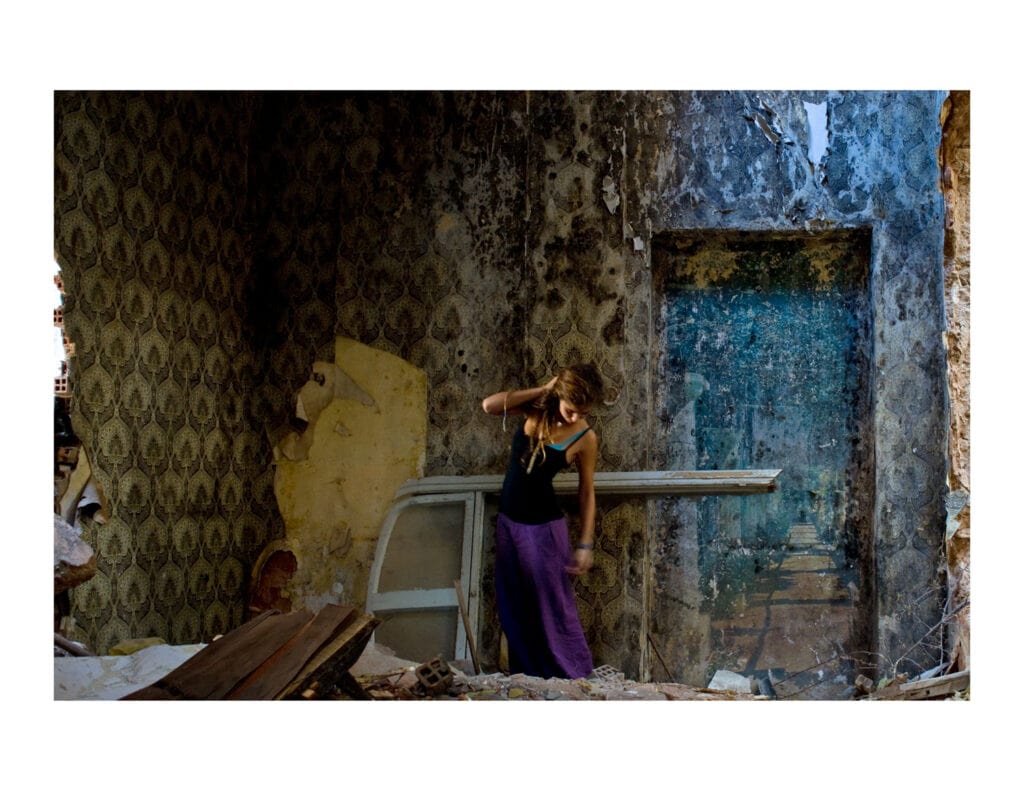
A child-sized figure stands on the threshold of a dwelling that perhaps she once knew.
Shot through with night lights and riddled with shrapnel, the building seems impossibly damaged with bomb fragments. Scaffolding and the patterns of scaffolding repeat on multiple interior walls and glow against the purple night sky. The vulnerable figure, backlit in the night in a gauzy shift, appears by a lighting overshot technique to have lost a limb and left hand.
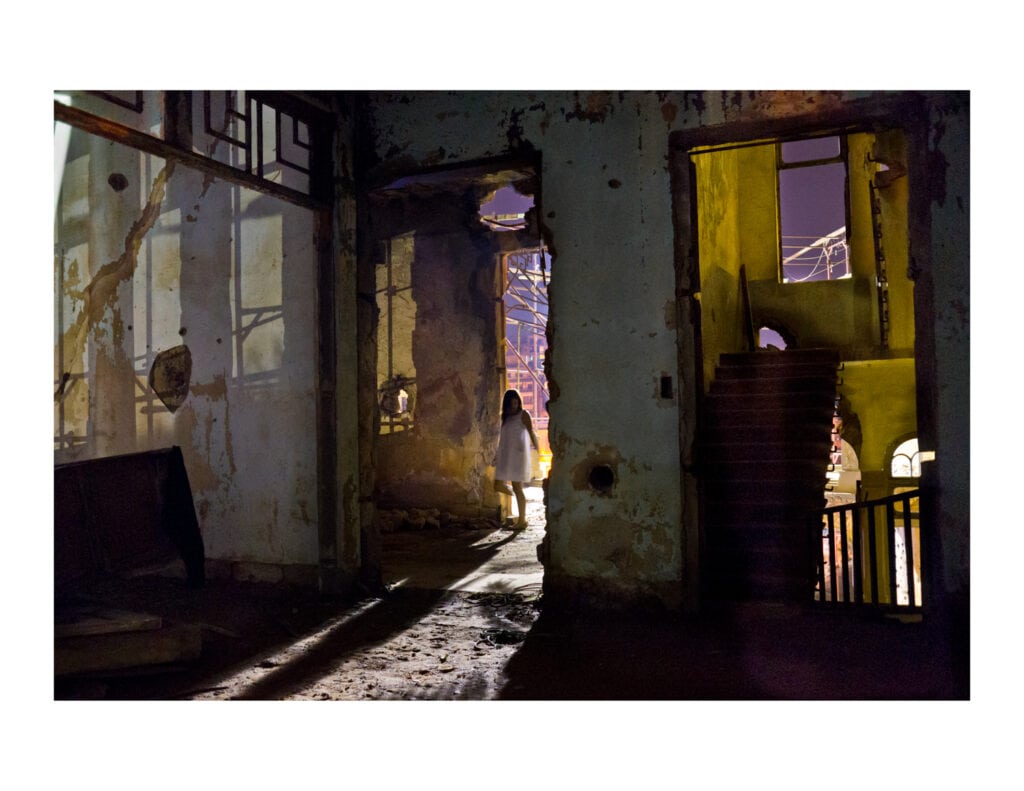
A lone male figure sits before an interior wall once proudly decorated with a now deteriorating apse. Peeling colors of dried blood red and roasted yellow reminisce on the glories of the building’s past as the plaster-surfaced ceiling reveals its crumbling lattice substructure. The meditative mood of the solitary applicant evokes a prayerful hope before the wall that remains.
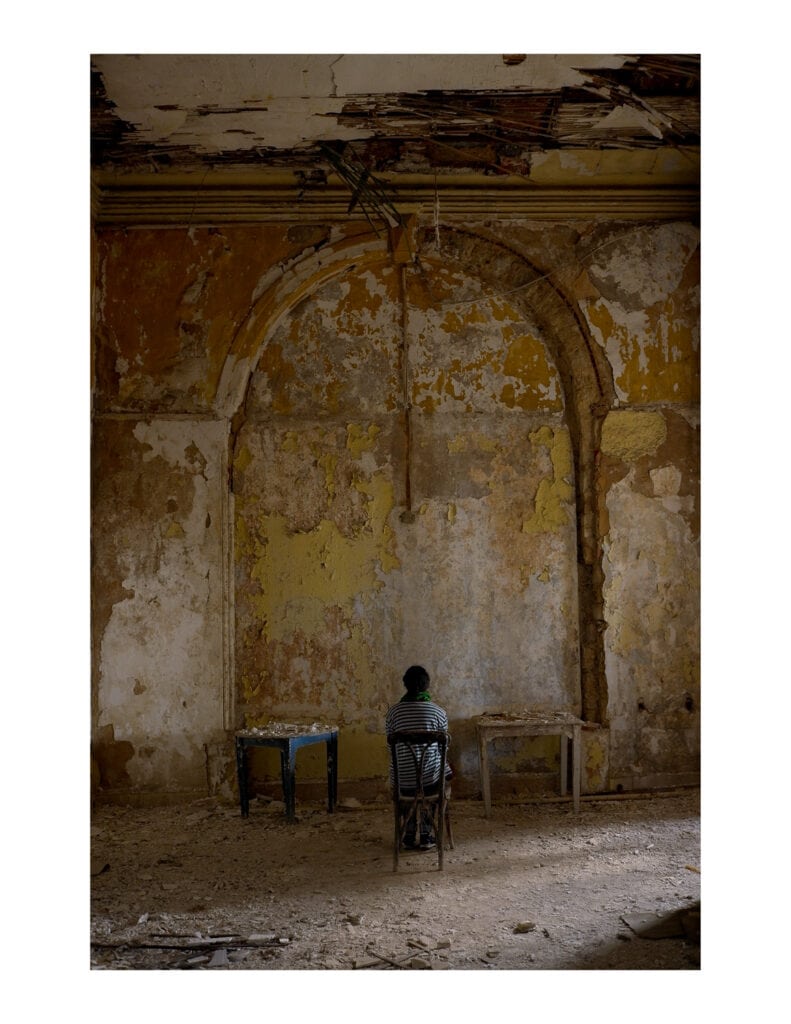
Cincinnati photographer William Howes exhibits a series of images taken in formerly groomed neighborhoods that reflect the finery and expensive taste of their inhabitants. The social elite lavishly adorned their homes with all the architectural arts, showcasing a variety of trades in every aspect of their planning.
Ghosn writes: “They formed at some point the frame of a whole city or neighborhood, characterizing its planning and architecture, and anchoring to it the visual and functional relationship of its inhabitants. With their disappearance, a part of the history of (our) city was also disappearing.”
Subdivided, neglected and abandoned for decades, these properties are ripe for hospital expansions and industrial office developments. Estates that are passed on to less affluent family members who cannot afford the upkeep of the inherited property, typically go quickly and cheaply in a developers’ market.
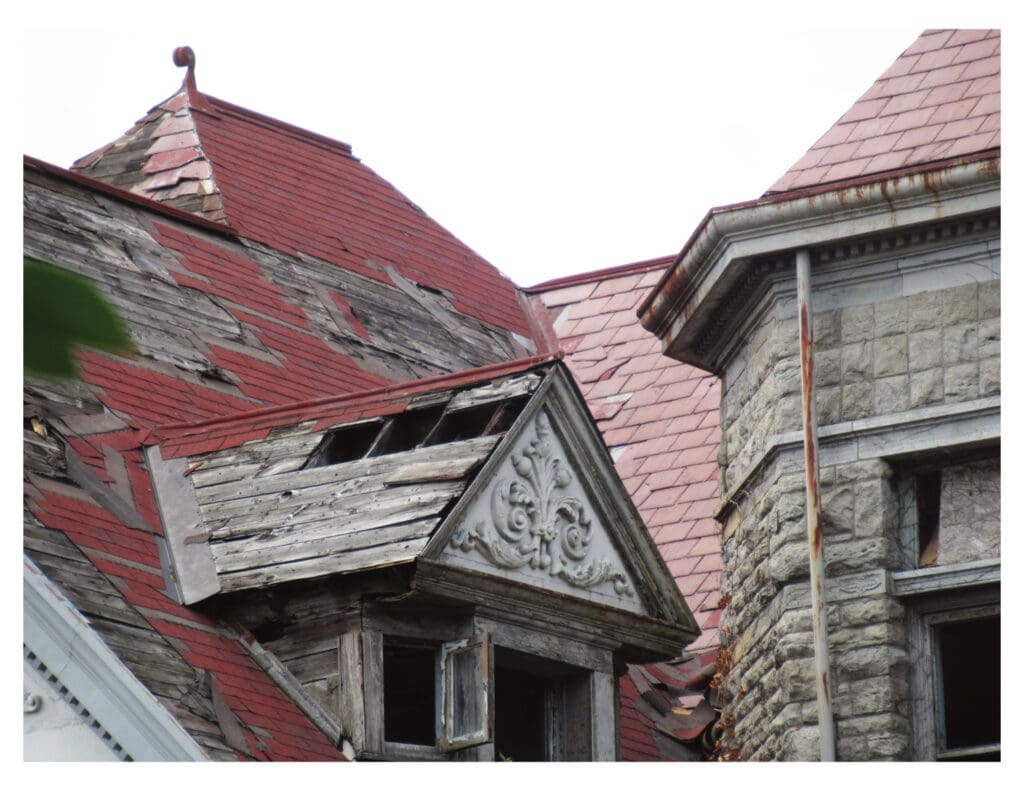
Beautiful scroll work above the angled window will soon disappear forever when this stone mansion on Erkenbrecher Avenue is demolished. Demolition contractors have remarked that many of these buildings are very difficult to take down because they are so well constructed.
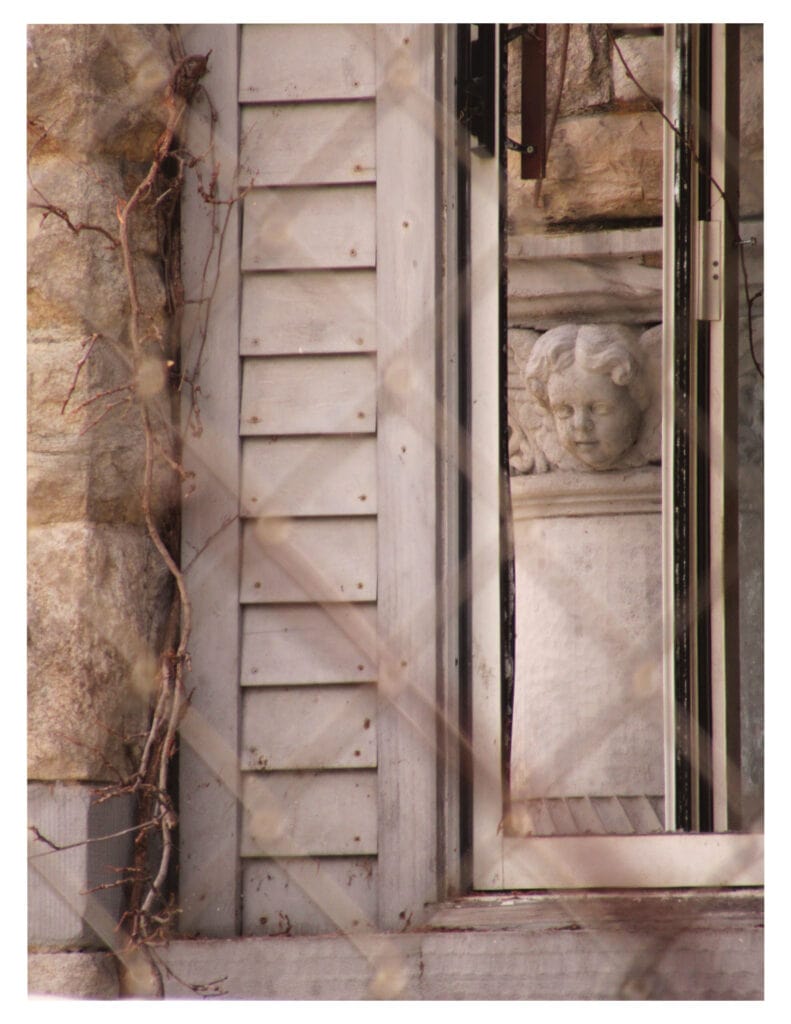
Another well appointed home on Erkenbrecher Avenue appointed with 6 angelic heads, each one of them uniquely carved, greeting visitors with watchful eyes.
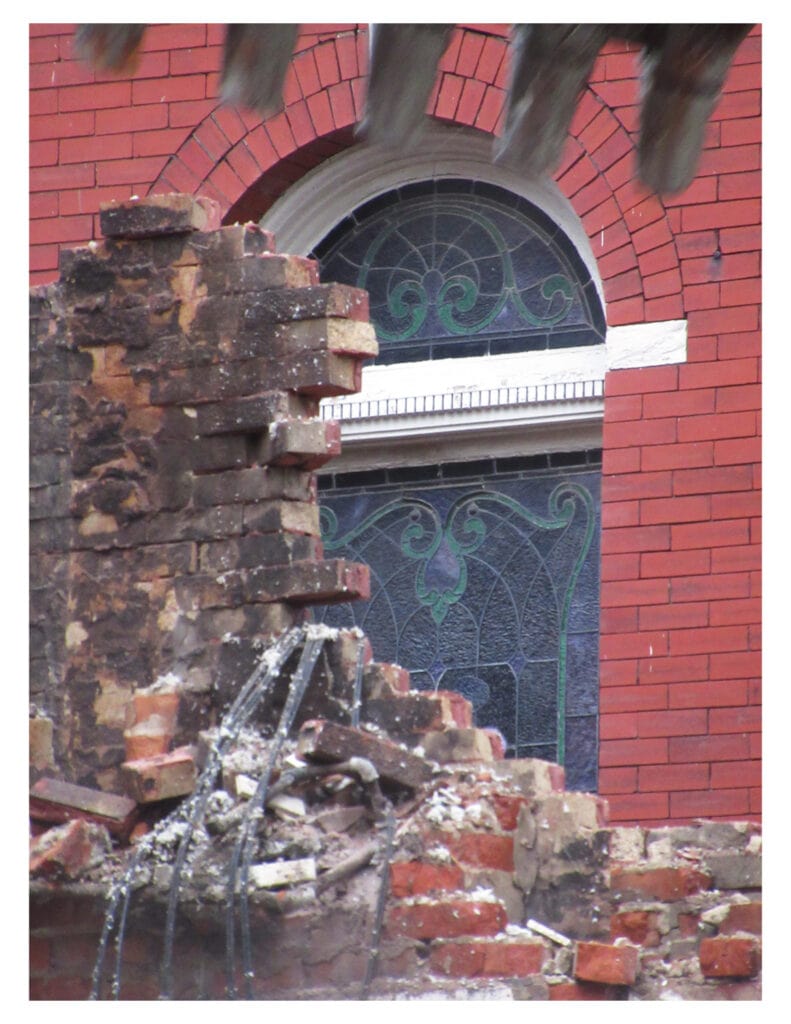
The Rubble Baking Company building near the new I-71 South -MLK ramp was demolished and replaced with a bigger office building.
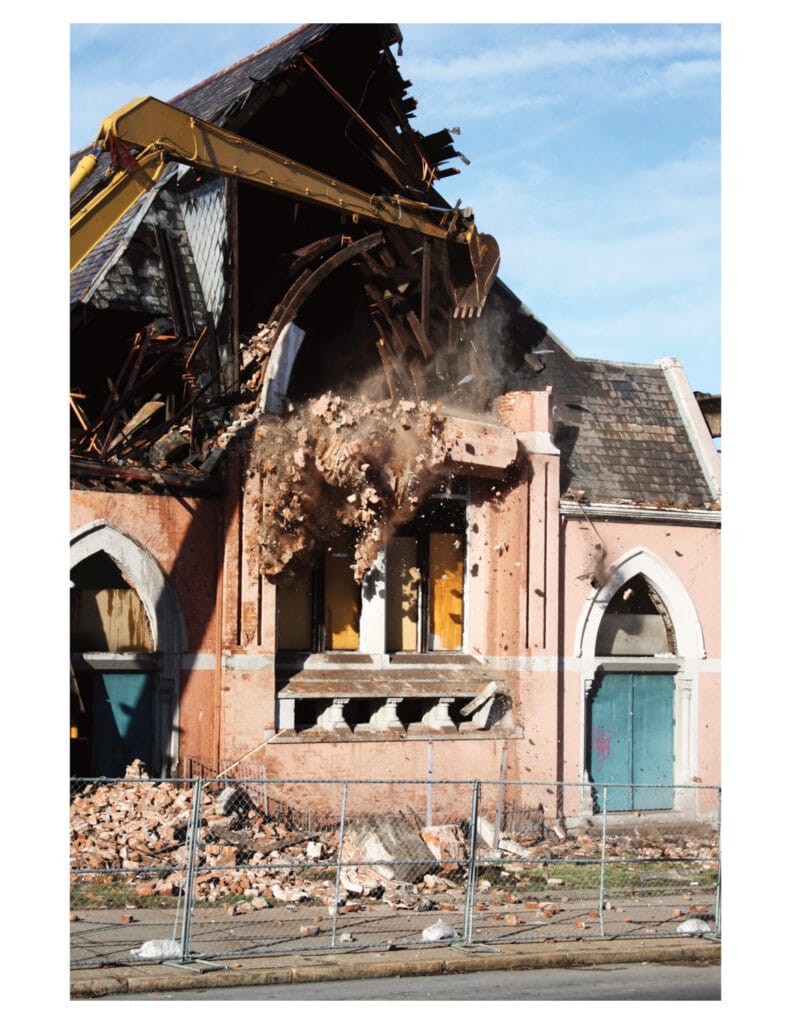
The Burkhardt House has been demolished after standing at Forest and Alaska Avenues for many years. In the February 11th, 1892 edition, The Cincinnati Enquirer noted regarding its location:“A far away view from every outlook.” Designed by celebrated Cincinnati Architect Samuel Hannaford, this home was listed on the national historic house registry.
“But the prettiest place in all the house was the dining room, a dream in green and white, and everybody was lost in admiration.” Cincinnati Enquirer, February 11, 1892
Curator Ghosn writes: “It is hoped that the exhibition will call attention to the disappearing architectural heritage of not only Cincinnati and Beirut, but also to the universality of the phenomenon, Cincinnati and Beirut being no exceptions in this respect; and that it will also serve as a call to action for current and future generations.”